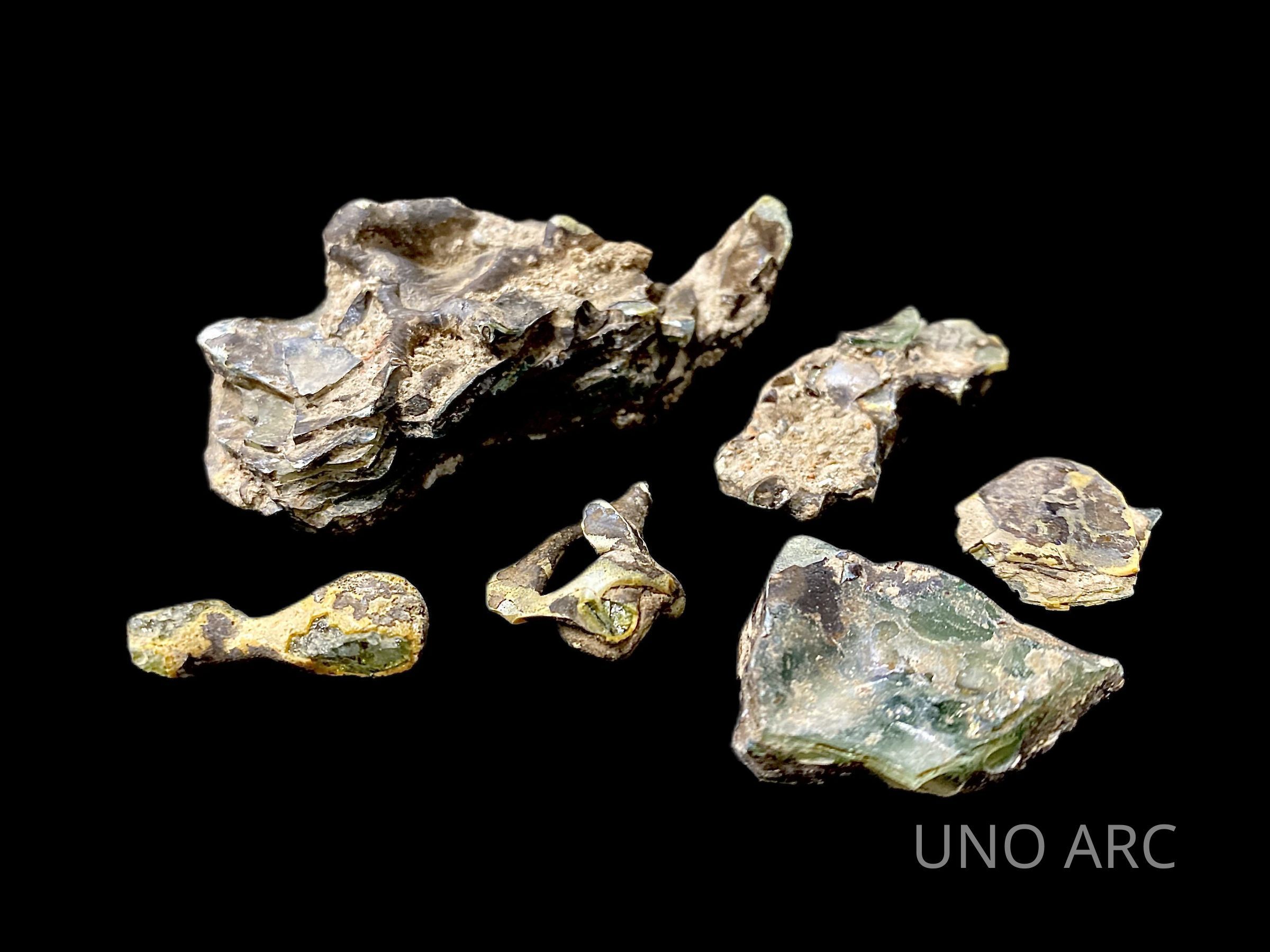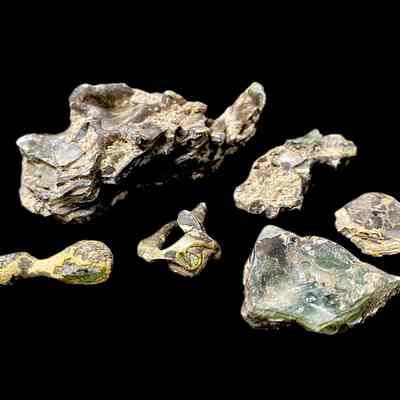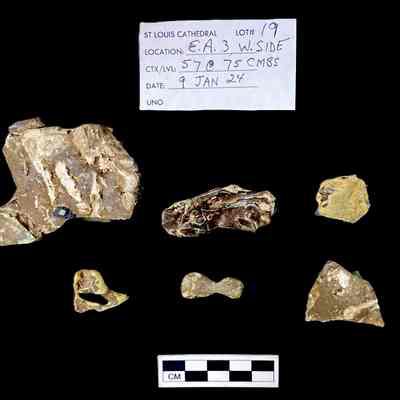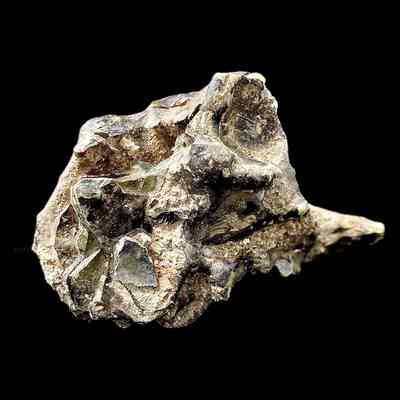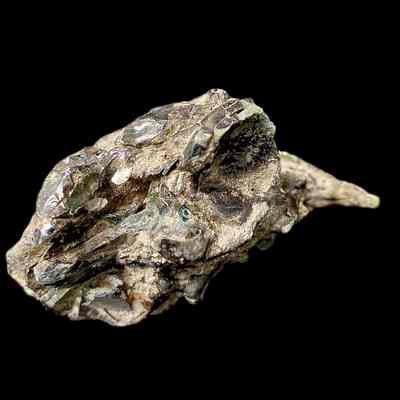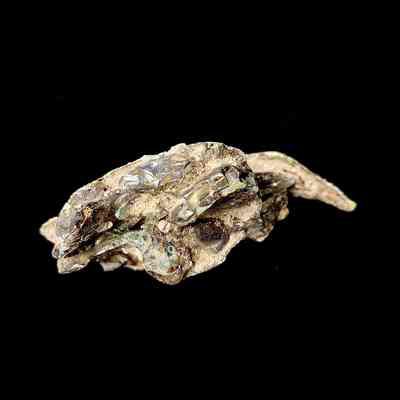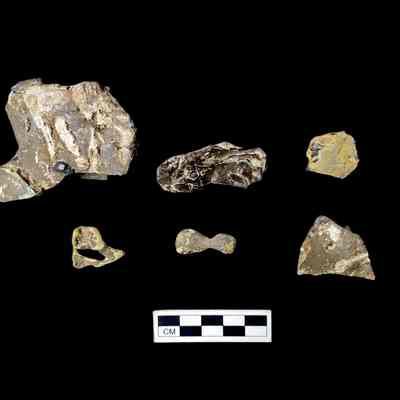Name/Title
UNO Collections: St. Louis CathedralDescription
Conglomerates of melted glassContext
St. Louis Cathedral Excavation, Lot 19, Location: EA3 WEST SIDE, CTX/LVL:57 @ 75 CMBS, 9 JAN 2024Collection
UNO CollectionsCataloged By
James RothResearch Notes
Person
Courtney MahlerNotes
Generally, glass melts at high temperatures ranging from 1400C to 1600C depending on the composition of materials in glass. (McGuire, 2023)
"Glass, both ancient and modern, is a material usually made of silicon dioxide, or silica, that is characterized by its disorderly atoms." (Knowable, 2021)
In the Late Bronze Age, 1600 to 1200 BCE, glass was mostly colored brown, sandy and buff hues. Countries such as: Egypt, Mesopotamia, Mycenaean Greece, Iraq and Seria began to use glass during this time period.
Researchers have debated where glass originated from. Some researchers say Egypt, and some researchers think that glass originated in the Near East which is common day Iraq and Seria.
Records and cultural contexts have helped archaeologists in better understanding the significance of glass.
Source: Knowable, C. W. (2021, November 23). A brief scientific history of glass. Smithsonian Magazine. https://www.smithsonianmag.com/science-nature/a-brief-scientific-history-of-glass-180979117/
McGuire, R. (2023, January 26). Glass Melting Point? (Charts & 18 Things U Should Know). GlassBeast. https://glassbeast.com/glass-melting-point/Created By
anthropologyandsociology@uno.eduCreate Date
April 18, 2024Updated By
drgray1@uno.eduUpdate Date
October 2, 2024